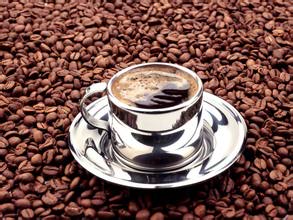Introduction to the flavor and taste of Panamanian coffee manor with strong floral and citrus flavor
Coffee was first brought to Panama by European settlers in the 19th century. In the past, Panamanian coffee was not very popular and its production was only 1/10 of that of its neighbor Costa Rica, but now the coffee industry's attention to fine coffee has made Panama increasingly interested in growing coffee.
Panama's geographical advantage lies in the fact that it has many distinctive microclimates suitable for coffee cultivation, and Panama also has many dedicated and professional coffee growers. This means that Panama has a lot of very good coffee, but this coffee is often associated with high prices.
The high coffee prices in Panama are mainly caused by the following factors:
Land Price: For the people of North America, they are very eager to buy a stable and beautiful land at a cheap price. Panama is one such place;
Panama's more farmers export coffee under the name of estates to emphasize their own estates;
Panama's labor laws impose high labor requirements, so the coffee industry has to pay higher wages, which consumers have to pay.
Esmeralda Estate
When discussing coffee prices, we should pay great attention to one plantation in Panama, and even say that no other single plantation has so far had such an impact on coffee cultivation in Central America. This is Esmeralda Estate, owned and run by the Peterson family.
When commodity prices were relatively low, the panama boutique coffee association organized a contest called "best panama": beans from different parts of panama were ranked and auctioned online. Esmeralda Estate has been growing a coffee called Geisha for many years, and this auction makes their coffee known to more people. From 2004 to 2007, they won the competition for four consecutive years, then won it again in 2009, 2010 and 2013. It continued to break records until it was priced at $21/lb in 2004, then rose to $170/lb in 2010. In 2013, a small percentage of sun-treated coffee sold for $350.25/lb. No one questioned that this was the highest price ever paid for a single estate coffee.
Unlike some other high-priced coffees (such as cat poop and blue mountain), the quality of this estate's coffee is truly at its price level, although high demand and market factors also play a role. This record-breaking coffee tastes unusual: bright and strong floral and citrus flavours make it tea. These are all derived from the advantages of the "Geisha" variety.
This estate allowed Geisha to be grown on coffee plantations not only in Panama but throughout Central America. For many coffee farmers, this variety means high prices, and to a large extent, this perception is correct. Because as a plantation of "Geisha", its coffee price can always sell more expensive than other plantations.
traceability
Panamanian coffee is highly traceable. Most Panamanian coffees can be traced back to a single estate or even part of a farm.
flavor profile
Panama's better coffee has citrus, floral, bright taste, elegant and complex flavor.
Population: 3406000
Annual output in 2013:6000 tons
The panamanian regional division depends mainly on the marketing situation of coffee and not too much on geographical distribution. Before, coffee spread widely, the following areas are actually a region, but these areas are closely connected together.
Boquete
This is what we know best about Panama. The special mountainous terrain of this area forms a very suitable microclimate for coffee cultivation. Cooler weather and frequent foggy days slow coffee cherry ripening, and some even say the climate can simulate high-altitude cultivation.
Altitude: 400-1900m
Harvest period: December to March
Cultivated varieties: Tibika, Kadura, Kaduai, Bourbon, Guixia, San Ramon
Candela
This area produces a lot of food for Panama, and also grows excellent coffee. This area borders Costa Rica.
Altitude: 1200-1600m
Harvest period: December to March
Cultivated varieties: Tibika, Kadura, Kaduai, Bourbon, Guixia, San Ramon
Renacimiento
Another appellation in Chirqui province, bordering Costa Rica. This region is relatively small, so it is not a major producer of Panamanian fine coffee.
Altitude: 1100-1500 m
Harvest period: December to March
Cultivated varieties: Tibika, Kadura, Kaduai, Bourbon, Guixia, San Ramon

Important Notice :
前街咖啡 FrontStreet Coffee has moved to new addredd:
FrontStreet Coffee Address: 315,Donghua East Road,GuangZhou
Tel:020 38364473
- Prev

Introduction to the characteristics of Guatemala Antigua Flower God Coffee Flavor Manor with delicate Flower scent
The architectural landscape of this small colonial town of more than 50 hectares is dominated by 18th-century baroque churches and monasteries. The city as a whole was rebuilt with several successive earthquakes, the city has the appearance of a defensive fortress, the walls are thick, and the towers are low and very colorful. Guatemala City (GuatemalaCity), capital of Guatemala, national economy and culture
- Next

Very full-bodied, fragrant and bitter Indonesian Manning coffee taste manor introduction
In July 2004, Indonesia held its first direct presidential election in history. Former Minister of political Security Susilo Bambang Yudhoyono and Minister of people's Welfare Coordination Muhammad Jusuf Kalla won two rounds of direct elections and were sworn in as president and vice president on October 20, 2004. In August 2005, the Indonesian government reached a peace agreement with the Aceh Independence Movement separatist organization. July 2006, India
Related
- Detailed explanation of Jadeite planting Land in Panamanian Jadeite Manor introduction to the grading system of Jadeite competitive bidding, Red bid, Green bid and Rose Summer
- Story of Coffee planting in Brenka region of Costa Rica Stonehenge Manor anaerobic heavy honey treatment of flavor mouth
- What's on the barrel of Blue Mountain Coffee beans?
- Can American coffee also pull flowers? How to use hot American style to pull out a good-looking pattern?
- Can you make a cold extract with coffee beans? What is the right proportion for cold-extracted coffee formula?
- Indonesian PWN Gold Mandrine Coffee Origin Features Flavor How to Chong? Mandolin coffee is American.
- A brief introduction to the flavor characteristics of Brazilian yellow bourbon coffee beans
- What is the effect of different water quality on the flavor of cold-extracted coffee? What kind of water is best for brewing coffee?
- Why do you think of Rose Summer whenever you mention Panamanian coffee?
- Introduction to the characteristics of authentic blue mountain coffee bean producing areas? What is the CIB Coffee Authority in Jamaica?

